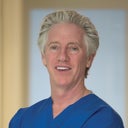I have terrible scarring after a bad blepharoplasty and now I'm looking for a specialist in eyelid surgery, someone who is best suited to remove my scars. What should I be looking for and where? I read that the choice of suture material and closure technique is important. Anything more? I really want this to be my last eyelid surgery and would travel anywhere in the world to meet the right surgeon. Also what can I expect from the surgery? Is there any chance at all to make the scars invisible?
Answers (6)
From board-certified doctors and trusted medical professionals
Dr. John J. Martin, Jr., MD

Dr. John J. Martin, Jr., MD
Oculoplastic Surgeon, Board Certified in Ophthalmology
Answer
Dr. Raffy Karamanoukian, MD, FACS

Dr. Raffy Karamanoukian, MD, FACS
Board Certified Plastic Surgeon
Answer
Dr. Pierre Guibor, MD
Dr. Pierre Guibor, MD
Oculoplastic Surgeon, Board Certified in Ophthalmology
Answer
Dr. Travis L. Shaw, MD
Dr. Travis L. Shaw, MD
Board Certified Facial Plastic Surgeon
Answer
Dr. William LoVerme, MD
Dr. William LoVerme, MD
Board Certified Plastic Surgeon
Answer
Dr. Suzanne Kim Doud Galli, MD, PhD, FACS
Dr. Suzanne Kim Doud Galli, MD, PhD, FACS
Board Certified Facial Plastic Surgeon
Answer
More Eyelid Surgery Questions
See all Eyelid Surgery Q&AWE SEND PRETTY
EMAILS
What’s trending? Who’s turning heads? Which TikTok myths need busting? We’ve got you. No fluff, no gatekeeping—just real talk. Get our free, unfiltered newsletter.